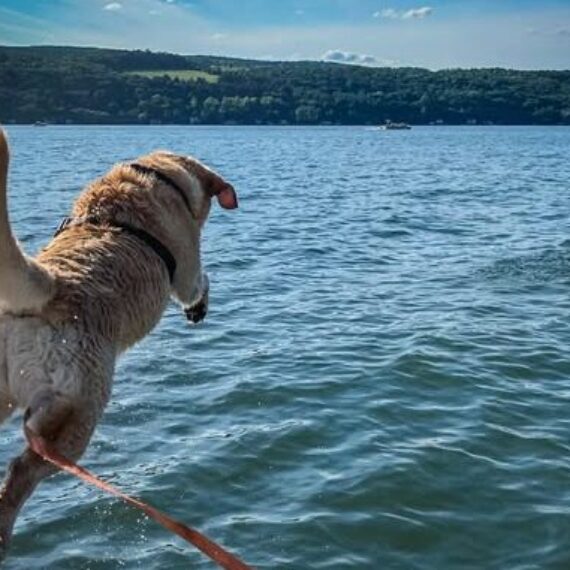The Finger Lakes are well-known for boating, waterfalls, and its wine industry. An invasive aquatic plant, hydrilla verticillata, is threatening Cayuga Lake as we know it, and other Finger Lakes may be next on the list. Considered one of the most aggressive aquatic plants, hydrilla was found 3 years ago in the Cayuga Inlet when a volunteer on the Floating Classroom spotted the plant in the water. If left unchecked, the plant can grow up to a foot per day even in low light or poor nutrient conditions. The plant has the potential to completely take over the Cayuga Inlet, making boating, fishing, and other forms of recreation impossible. The economic consequences would be dire, for both the Ithaca area – and potentially the entire Great Lakes Region.
Since the discovery, the response has been swift and thorough. With hundreds of residents and visitors using the Cayuga Inlet on a daily basis, the possibility for the plant to continue to spread is tremendous. The Hydrilla Task Force of the Cayuga Lake Watershed was quickly formed to lead the eradication efforts and includes representatives from the NYSDEC, Soil & Water Conservation District, Cooperative Extension, and the City of Ithaca.
After considering all of the possible eradication options, the Task Force decided the best chance for complete eradication would be to apply herbicides to kill the plant. In a sustainability-focused community, this decision was not made lightly. Due to the extent of the hydrilla infestation, the size of Cayuga Lake, the possibility for spread to other Finger Lakes and Great Lakes, and the fact that the Cayuga Inlet was largely void of native aquatic plants to begin with, herbicide treatment is considered the only viable option.
Herbicide application will go a long way towards killing the existing plants, but it is up to residents and visitors to help prevent further spread of hydrilla. If you’ve recently gone boating from Alan Treman Marina or Myers Park, you’ve seen the stations and signs reminding boaters to inspect their boat before launching and after it comes out of the water. Just a single fragment of the plant could be enough to colonize a new area.
As Ithaca’s resource for everything water-related, CSI has been playing a role in the efforts to eradicate hydrilla. Once it became clear that herbicides would be used, CSI quickly learned how to perform the analytical testing to determine levels of the herbicides Endothall and Fluridone. The concentration is incredibly important because it needs to be high enough to kill the hydrilla, yet low enough that the Bolton Point drinking water plant can still provide safe drinking water to the community. Due to the fact that testing these herbicides is uncommon, if it were not for CSI’s local laboratory, samples would have needed to be shipped to Florida for testing.
Whether or not the battle against hydrilla will be won or not is still unknown, although indications are positive. Extensive surveying and well-coordinated efforts by local and state agencies have been successful so far. Only time can tell if hydrilla will be eliminated from Cayuga Lake – and if it is – it may only be a matter of how long until the next invasive species threatens the Finger Lakes.
For more information about hydrilla, the eradication efforts, or how you can get involved visit:
http://stophydrilla.org
http://www.nyis.info/index.php?action=invasive_detail&id=16



